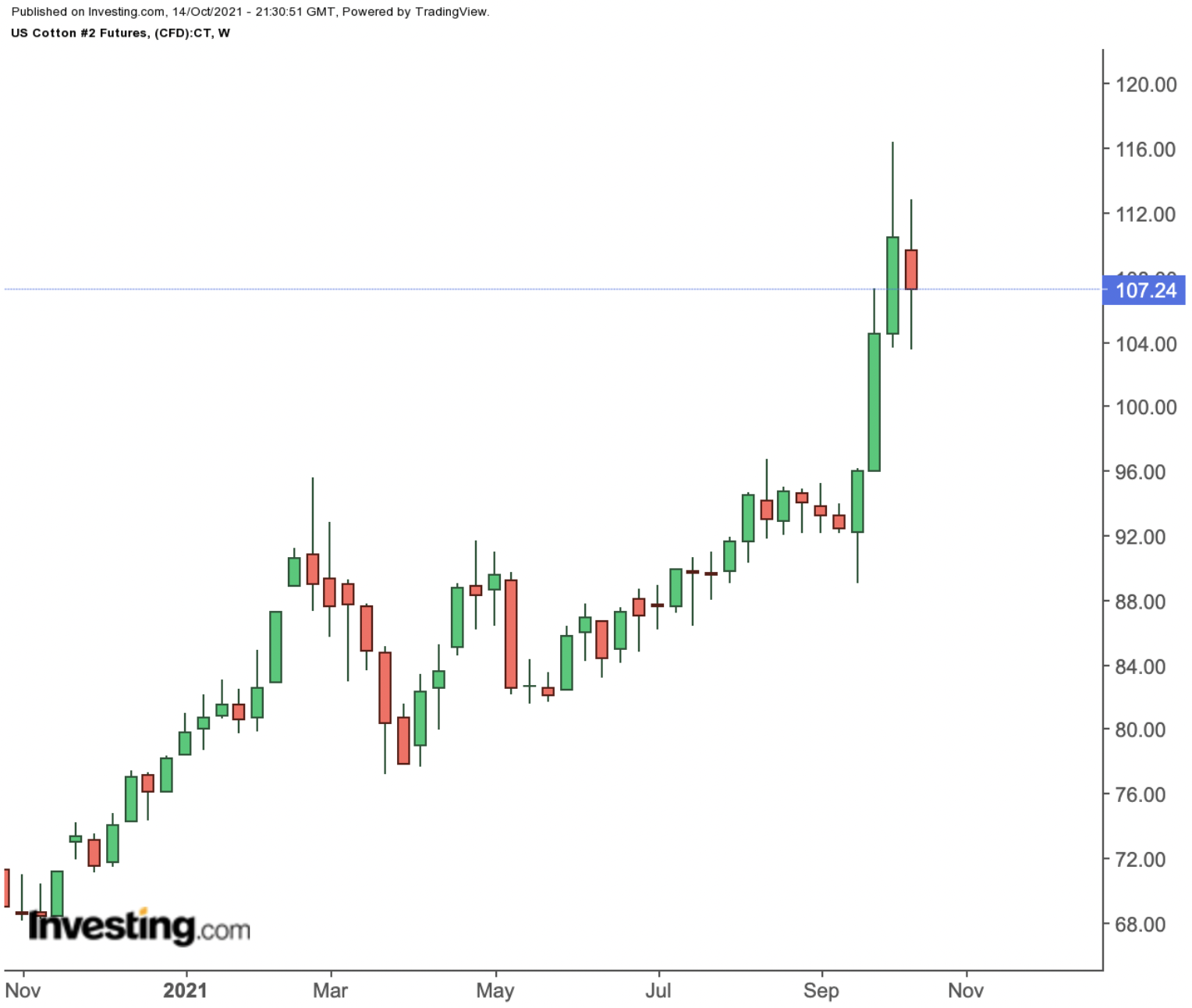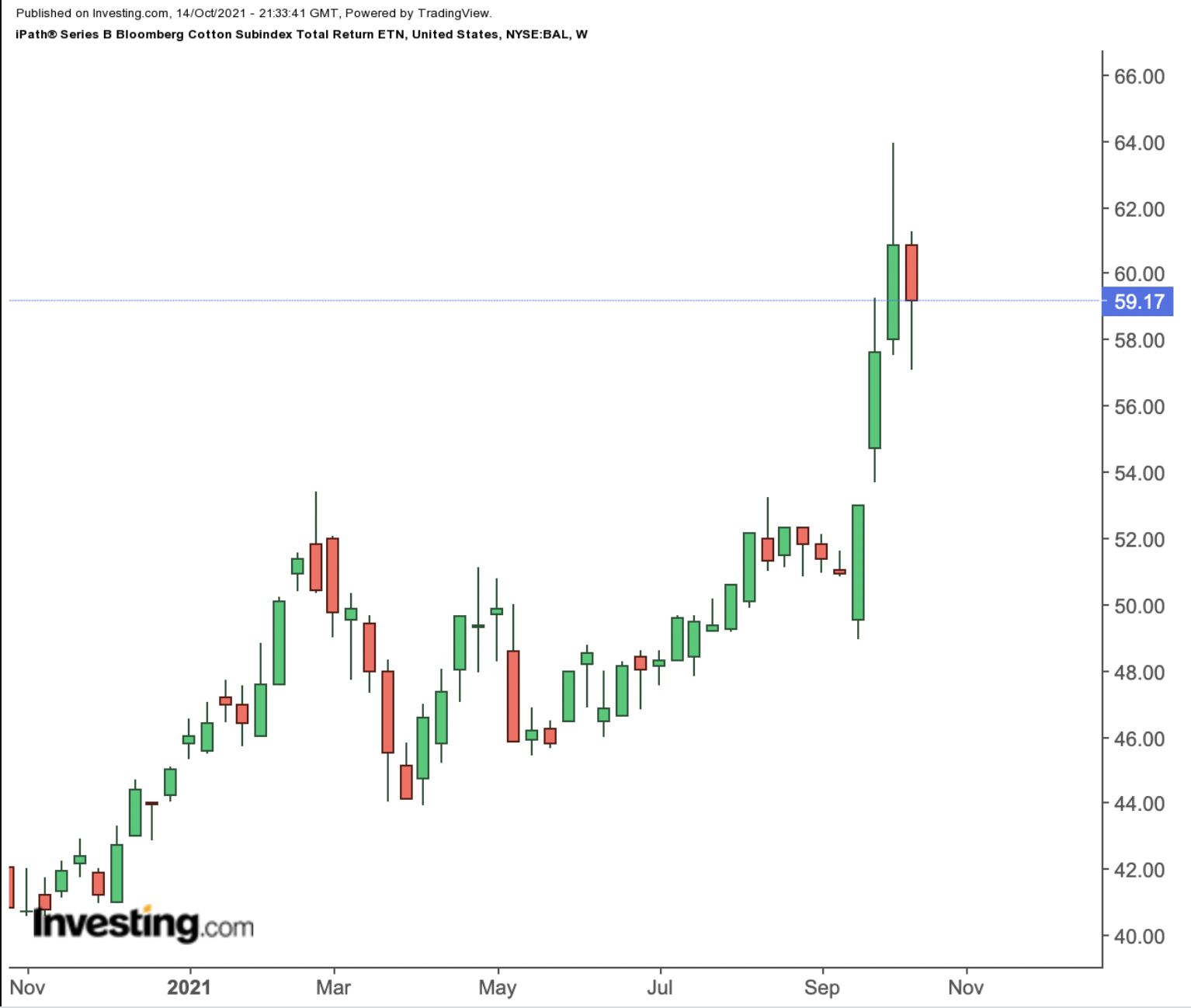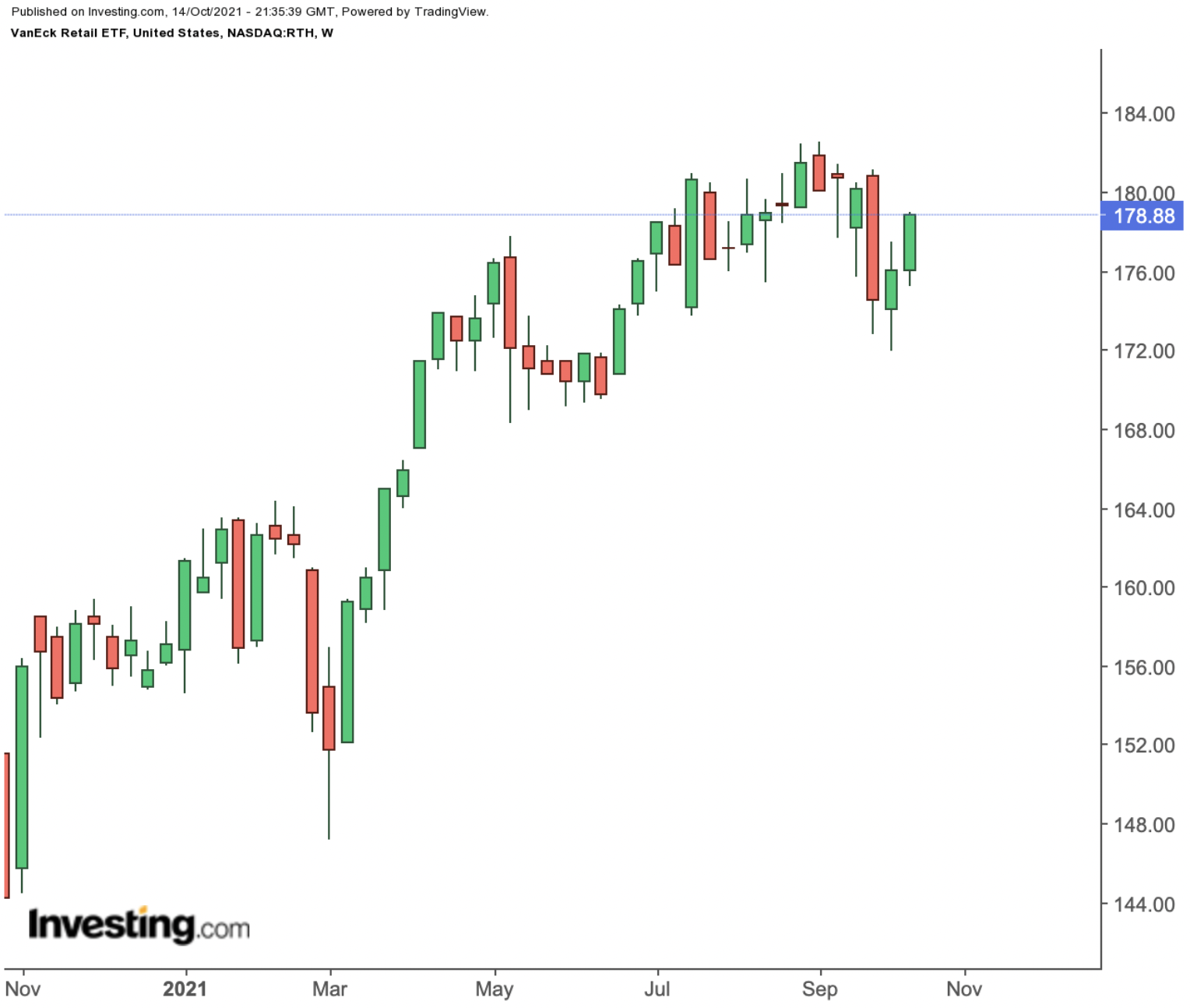Cotton prices have been surging in recent months. The Switzerland-based International Trade Centre (ITC) highlights:
“When people in the cotton market speak of prices, they are usually referring either to the Cotlook A Index or to the latest prices quoted for the nearby futures contract on ICE Futures in New York.”
Futures prices on ICE are currently trading above $1.05 a pound. Earlier in the week, cotton, or “white gold” as the ancients called it, briefly went over $1.16, the highest level since July 2011. Many readers might well remember that in April 2020, during the early days of the pandemic, it was below 50 cents a pound. Year-to-date the price is up more than 40%.

Raw material prices have surged in 2021, in part, due to increasing demand and supply-chain issues worldwide. Cotton prices have been no exception. Producers of cotton have also suffered from the impacts of climate change, including extraordinary drought, hurricanes or floods.
According to a recent report by the US Department of Agriculture:
“The 2021/22 US cotton supply and demand estimates show lower production, lower ending stocks and a higher price compared with last month…. During the first weeks of October 2021, world cotton prices have averaged over 115 cents per pound, up at least 40% from both year earlier and long-run levels.”
Metrics from Statista show:
“Cotton is the most often used natural fiber worldwide and, thus, an important component of the textile industry. In 2019/2020, the total global production of cotton amounted to some 122 million bales.”
A bale is 480 pounds.
Now, analysts wonder how consumers might react to increased cotton prices in the months ahead. The National Retail Federation points out that the US consumer demand is robust and retailers are resilient.
Therefore, today we introduce two exchange-traded products (ETPs) that could appeal to investors who believe cotton prices might stay strong and even make new highs.
1. iPath® Series B Bloomberg Cotton Subindex Total ReturnSM ETN
Current Price: $59.17
52-Week Range: $40.50 - $63.95
Expense Ratio: 0.45% per year
The iPath® Series B Bloomberg Cotton Subindex Total Return ETN (NYSE:BAL) is an exchange-traded note (ETN) that provides direct exposure to cotton as a commodity through cotton futures contracts. ETNs are unsecured debt obligations of the issuer—i.e, Barclays (NYSE:BCS) in this case. Therefore, they carry default risks and may not be appropriate for all portfolios.

The non-leveraged ETN, which was first listed in January 2018, currently has assets of around $20.2 million. It tracks the Bloomberg Cotton Subindex Total ReturnSM Index.
So far in 2021, BAL has returned more than 29% and hit a multi-year high in early October. Interested readers could consider buying in at the next pullback, around $55.
2. VanEck Retail ETF
Current Price: $178.88
52-Week Range: $143.10 - $182.58
Dividend Yield: 0.57%
Expense Ratio: 0.35% per year
Our next choice, an exchange-traded fund (ETF), is an indirect play on the strength of cotton prices. The VanEck Retail ETF (NASDAQ:RTH) gives access to 25 of the world’s largest retailers. They include e-commerce names, multi-line retailers, wholesalers, specialty retailers as well as staples retailers, like food stores.

RTH, which began trading in December 2011, tracks the MVIS US Listed Retail 25 Index. Although the fund claims to invest in global retailers, it currently offers a concentrated exposure to US retail giants. About 95.9% of holdings are headquartered in the States, while the rest are from China.
The top 10 names make up almost 70% of net assets of $206.7 million, making it a top-heavy fund. In terms of sector allocations, we see consumer discretionary shares (73.2%) followed by consumer staples (17.4%) and health care (9.4%).
Leading holdings in the roster include Amazon (NASDAQ:AMZN), Home Depot (NYSE:HD), Lowe’s (NYSE:LOW), Costco Wholesale (NASDAQ:COST) and Walmart (NYSE:WMT).
The ETF is up 12.6% in the past year and hit a record high in early September. Price-to-earnings (P/E) and price-to-book (P/B) ratios stand at 26.08x and 7.29x.
These companies in the fund could benefit from increased cotton prices that would be reflected in retail prices of textiles and apparel. However, a busy earnings season is upon us. Given how far many of these stocks in RTH are up in 2021, there could be short-term profit-taking soon. A potential decline toward $170 would increase the margin of safety.
